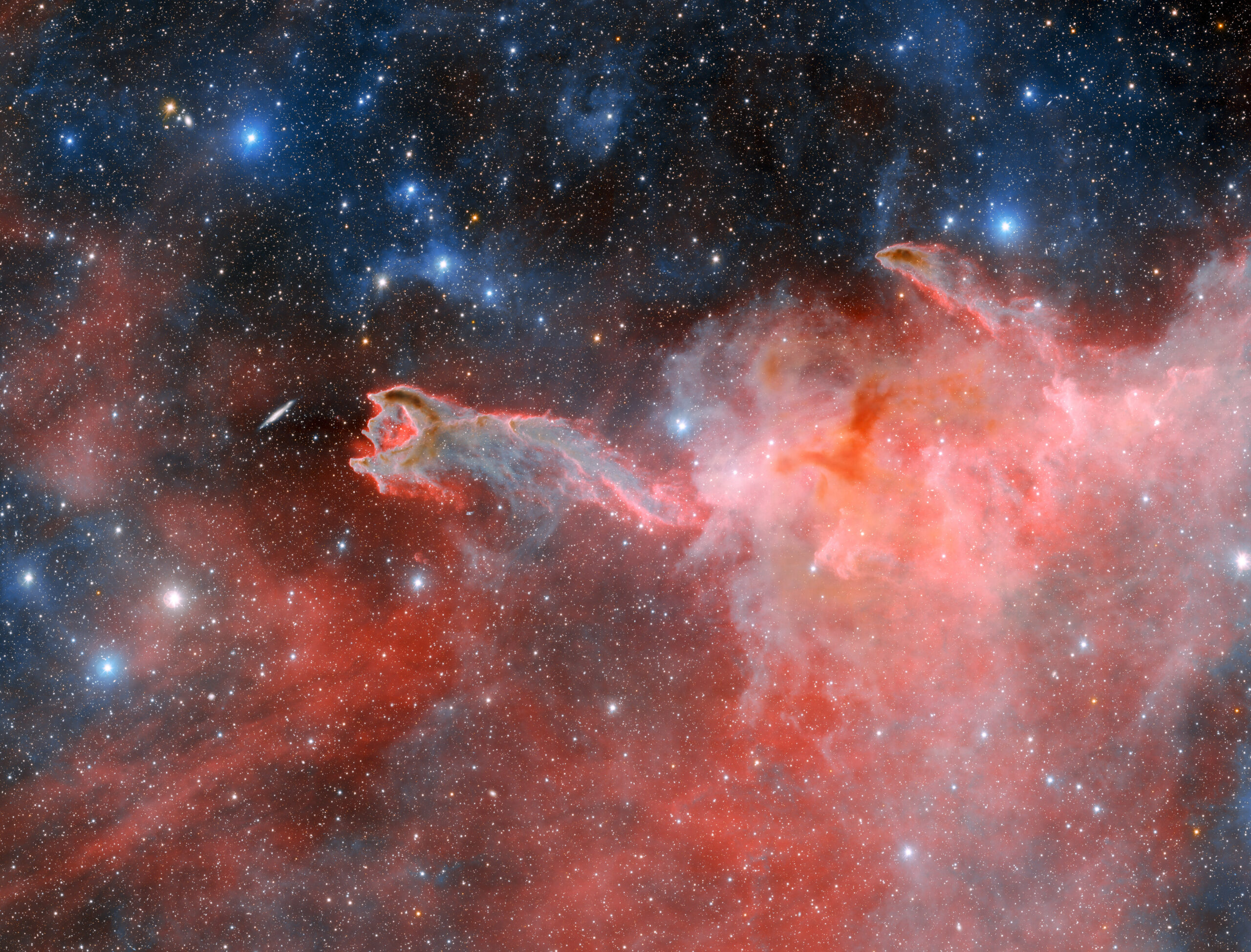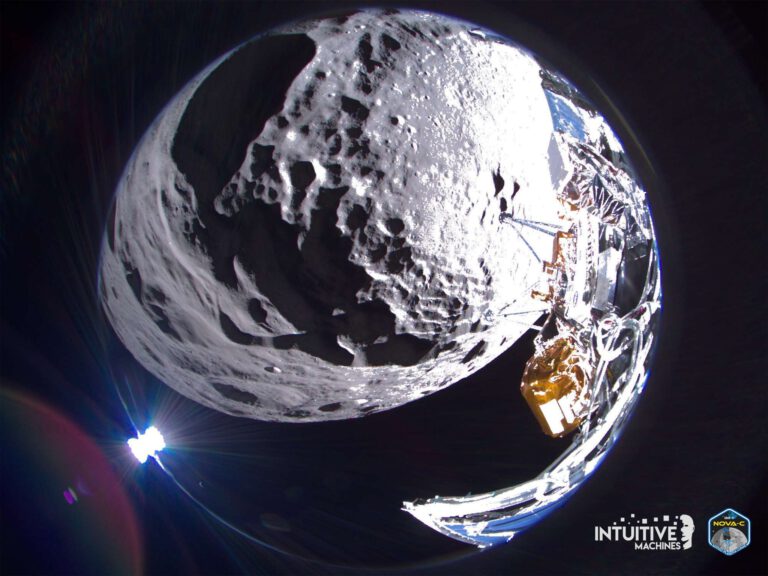Astronomers have recently turned their attention to a fascinating cosmic structure known as CG 4, thanks to the powerful Dark Energy Camera (DECam) mounted on the U.S. National Science Foundation’s Víctor M. Blanco 4-meter Telescope at Cerro Tololo Inter-American Observatory (CTIO). This intriguing formation, often referred to as a cometary globule, has captured the interest of scientists due to its unique shape and composition. Located approximately 1300 light-years away in the constellation Puppis, CG 4 presents a ghostly hand-like appearance, reaching out into the cosmos.
Cometary globules like CG 4 are a subclass of dark nebulae known as Bok globules. These are dense clouds of cosmic gas and dust enveloped by hot, ionized material. The distinct tail and head structure of cometary globules resemble that of a comet, though they are fundamentally different in nature. The DECam’s advanced technology, particularly its Hydrogen-alpha filter, has allowed astronomers to capture the faint red glow of ionized hydrogen within CG 4, revealing more about its structure and composition.
CG 4’s head measures about 1.5 light-years in diameter, while its faint tail extends up to eight light-years. This makes CG 4 a relatively small Bok globule, a common trait among cometary globules. Despite their diminutive size, these formations contain enough gas to potentially give birth to new stars. In CG 4’s case, the surrounding massive stars’ radiation is both a creative and destructive force. The radiation excites the hydrogen atoms in CG 4, causing them to emit light. However, this same radiation gradually erodes the head of the globule, stripping away its material and scattering starlight.
First identified in 1976 through images taken with the UK Schmidt Telescope in Australia, cometary globules were initially difficult to detect due to their faintness and the dark stellar dust that envelops them. However, advancements in astronomical imaging have allowed scientists to study these enigmatic structures in greater detail. CG 4, in particular, is located within the Gum Nebula, a vast expanse of glowing gas believed to be the remnants of a supernova that occurred about a million years ago. The Gum Nebula is home to at least 31 other cometary globules, each exhibiting unique features.
The origin of CG 4’s distinctive shape remains a topic of debate among astronomers. Two primary theories have been proposed. The first suggests that these globules may have originated as spherical nebulae, similar to the Ring Nebula, and were later disrupted by a nearby supernova explosion, potentially the one that created the Gum Nebula. The second theory posits that the shape of cometary globules is a result of stellar winds and radiation pressure from nearby hot, massive stars. Supporting this idea, all cometary globules in the Gum Nebula appear to have tails pointing away from its center, where the Vela Supernova Remnant and Vela Pulsar are located.
In addition to its scientific intrigue, the image of CG 4 captured by DECam also presents an interesting visual juxtaposition. It appears as if CG 4 is poised to engulf the edge-on spiral galaxy ESO 257-19, also known as PGC 21338. This illusion is due to a chance alignment; in reality, the galaxy lies over a hundred million light-years beyond CG 4.
The study of CG 4 and other cometary globules not only helps astronomers understand the dynamics of stellar formation and the lifecycle of cosmic structures but also provides a window into the complex interactions between massive stars and their surrounding environments. As technology advances and our ability to observe the cosmos improves, the secrets of these celestial formations will continue to be unveiled, offering new insights into the workings of our universe.
Image: NOIRLAB
Source: LULOP


















+ There are no comments
Add yours